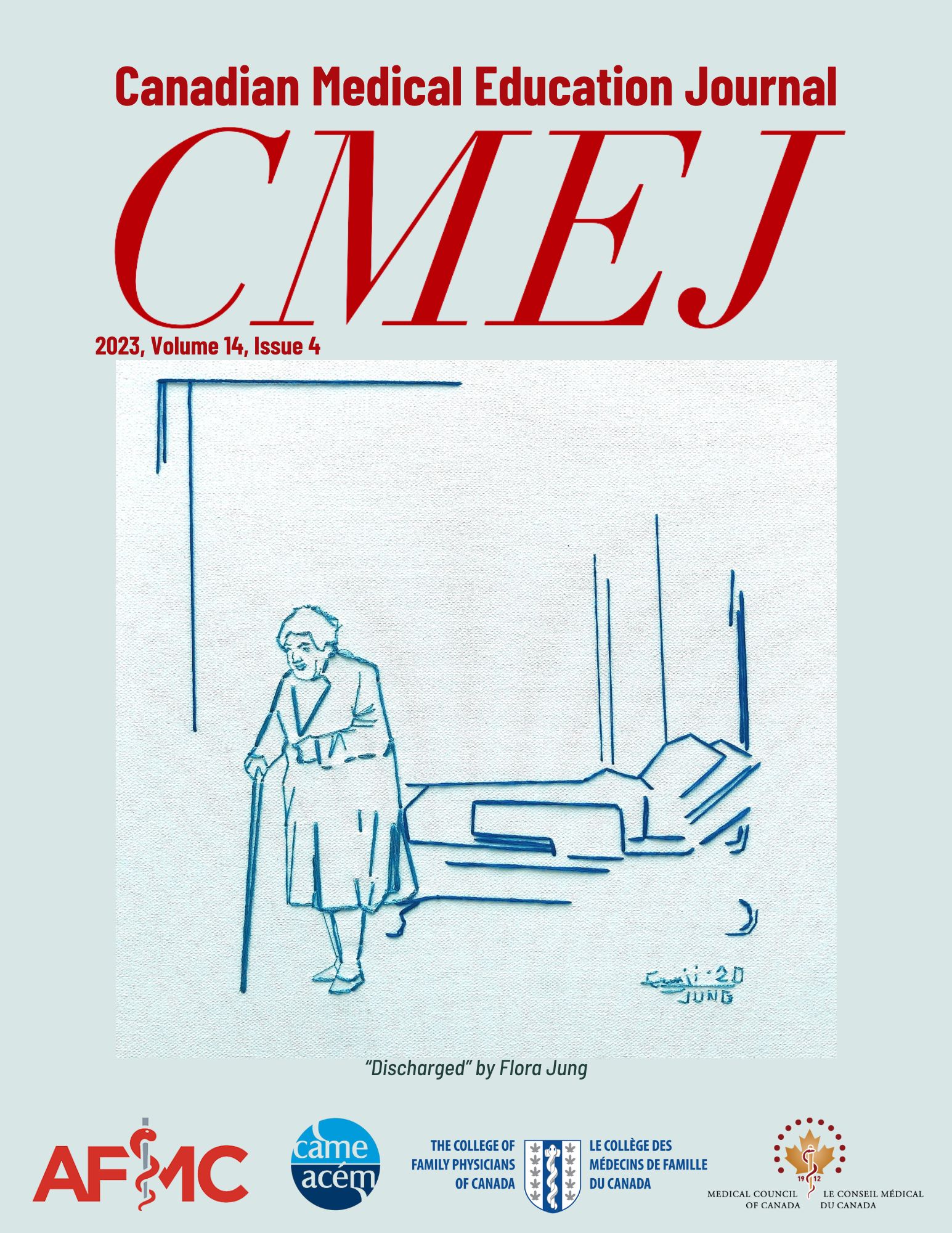Five practical strategies to get a grip on large group cooperative virtual learning in medical education
DOI:
https://doi.org/10.36834/cmej.74240Abstract
The COVID-19 pandemic has led to the rapid replacement of in-person classroom learning with virtual large group learning. Done well, virtual large group learning can be an effective tool that provides flexibility, accessibility, and collaboration between learners. However, despite its potential benefits, human and technological challenges limit engagement and overall efficacy of large group virtual learning. The following account provides an evidence-based framework to maximize cooperative learning, learner engagement and retention of medical education in the virtual setting.
References
Dost S, Hossain A, Shehab M, Abdelwahed A, Al-Nusair L. Perceptions of medical students towards online teaching during the COVID-19 pandemic: a national cross-sectional survey of 2721 UK medical students. BMJ open. 2020;10(11):e042378. http://dx.doi.org/10.1136/bmjopen-2020-042378
Weber W, Ahn J. COVID-19 Conferences: Resident Perceptions of Online Synchronous Learning Environments. West J Emerg Med. 2021;22(1):115. https://doi.org/10.5811/westjem.2020.11.49125
Dumford AD, Miller AL. Online learning in higher education: exploring advantages and disadvantages for engagement. J Comp High Educ. 2018;30(3):452-65. https://doi.org/10.1007/s12528-018-9179-z
D'Eon M. A blueprint for interprofessional learning. J Inter Care. 2005;19:49-59. https://doi.org/10.1080/13561820512331350227
D'Eon M, Zhao R. Five ways for facilitators to get a grip on small group learning. CMEJ. 2022;13(2):82-8. https://doi.org/10.36834/cmej.72949
Edmunds S, Brown G. Effective small group learning: AMEE Guide No. 48. Med Teach. 2010;32:715-26. https://doi.org/10.3109/0142159X.2010.505454
Sharp EA, Norman MK, Spagnoletti CL, Miller BG. Optimizing synchronous online teaching sessions: a guide to the “new Normal” in medical education. Acad peds. 2021;21(1):11-5. https://doi.org/10.1016/j.acap.2020.11.009
Vitale AT. Faculty development and mentorship using selected online asynchronous teaching strategies. J Contin Educ Nurs 2010;41(12):549-56. https://doi.org/10.3928/00220124-20100802-02
Zoom. Protecting your data. https://explore.zoom.us/en/trust/security/#:~:text=End%2Dto%2Dend%20Encryption%2C,to%20the%20meeting's%20private%20keys. [Accessed on DATE].
Morawo A, Sun C, Lowden M. Enhancing engagement during live virtual learning using interactive quizzes. Med ed. 2020;54(12):1188-. https://doi.org/10.1111/medu.14253
Caponetto I, Earp J, Ott M. Gamification and education: aliterature review. European Conference on Games Based Learning; 2014: Acad Conf Intern Limited. p. 50.
Young MS, Robinson S, Alberts P. Students pay attention! Combating the vigilance decrement to improve learning during lectures. Active Learn High Educ. 2009;10(1):41-55. https://doi.org/10.1177/1469787408100194
Downloads
Published
Issue
Section
License
Copyright (c) 2023 Ryan Peters, Neshaya Wijeratne, Meghan Bowman, Don Thiwanka Wijeratne

This work is licensed under a Creative Commons Attribution-NonCommercial-NoDerivatives 4.0 International License.
Submission of an original manuscript to the Canadian Medical Education Journal will be taken to mean that it represents original work not previously published, that it is not being considered elsewhere for publication. If accepted for publication, it will be published online and it will not be published elsewhere in the same form, for commercial purposes, in any language, without the consent of the publisher.
Authors who publish in the Canadian Medical Education Journal agree to release their articles under the Creative Commons Attribution-Noncommercial-No Derivative Works 4.0 Canada Licence. This licence allows anyone to copy and distribute the article for non-commercial purposes provided that appropriate attribution is given. For details of the rights an author grants users of their work, please see the licence summary and the full licence.






